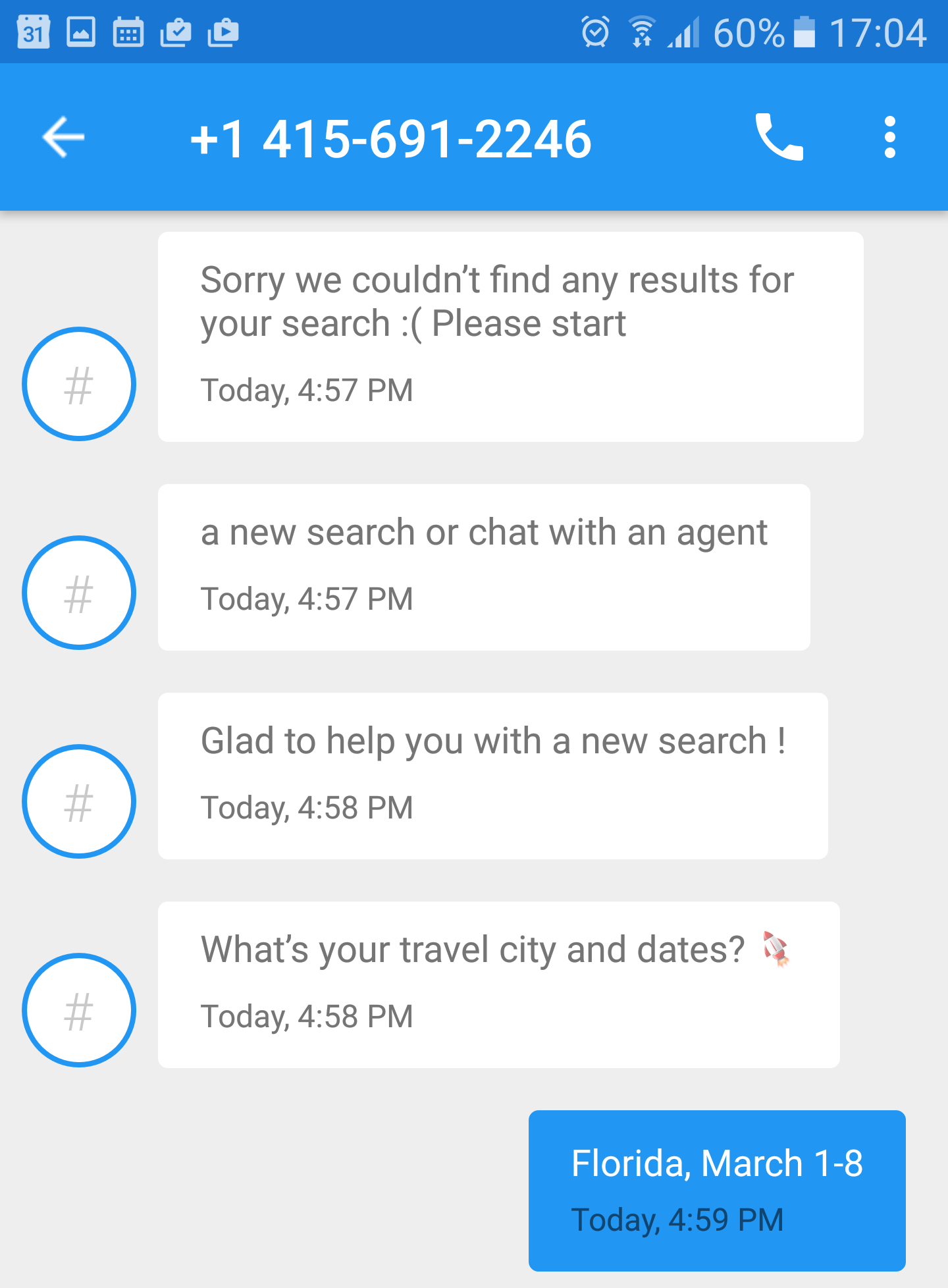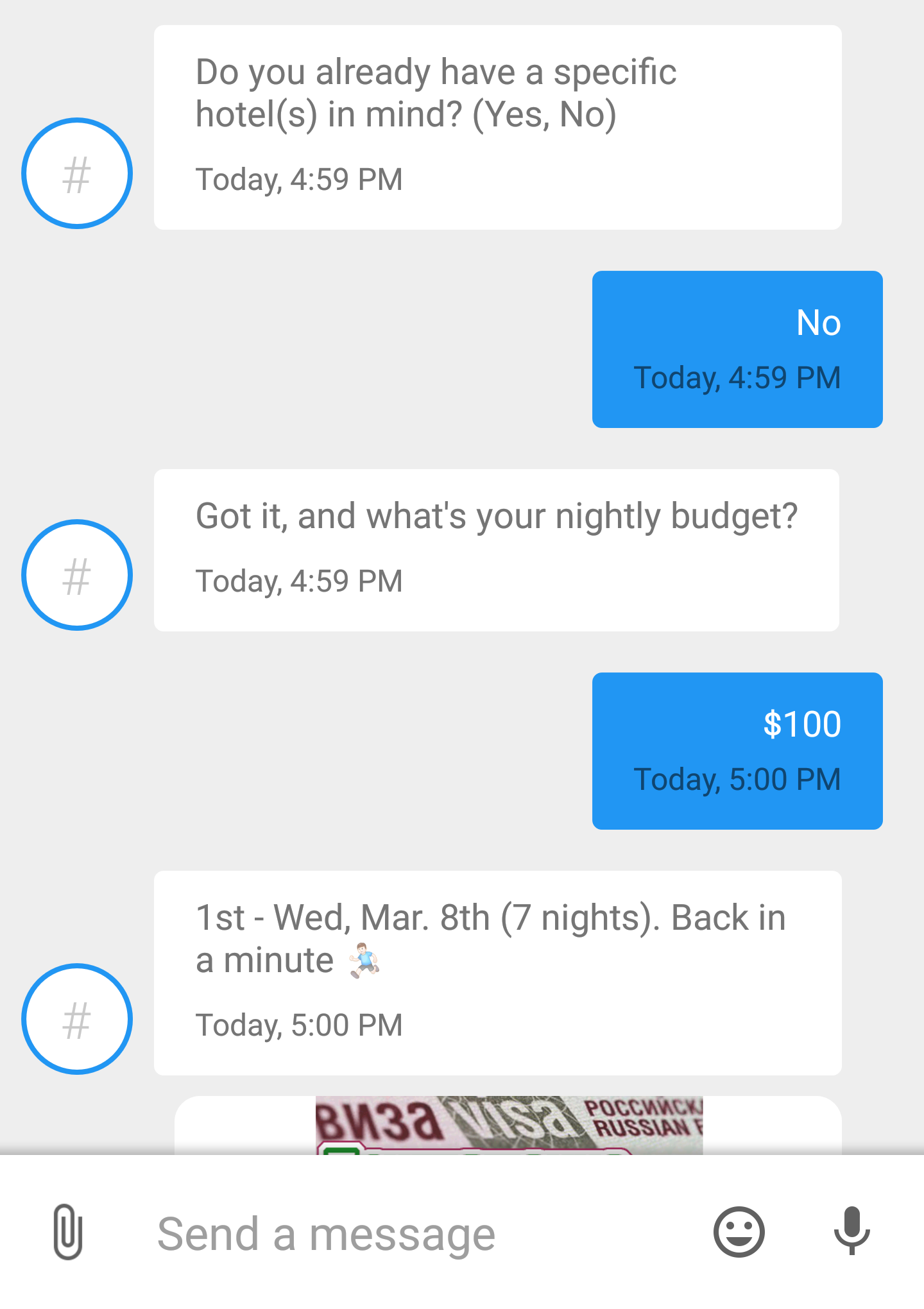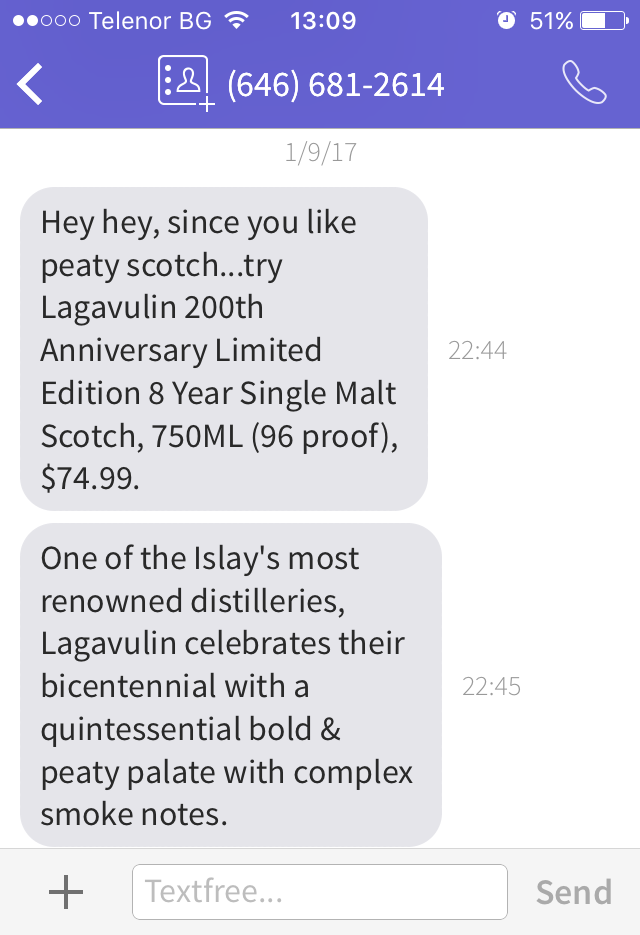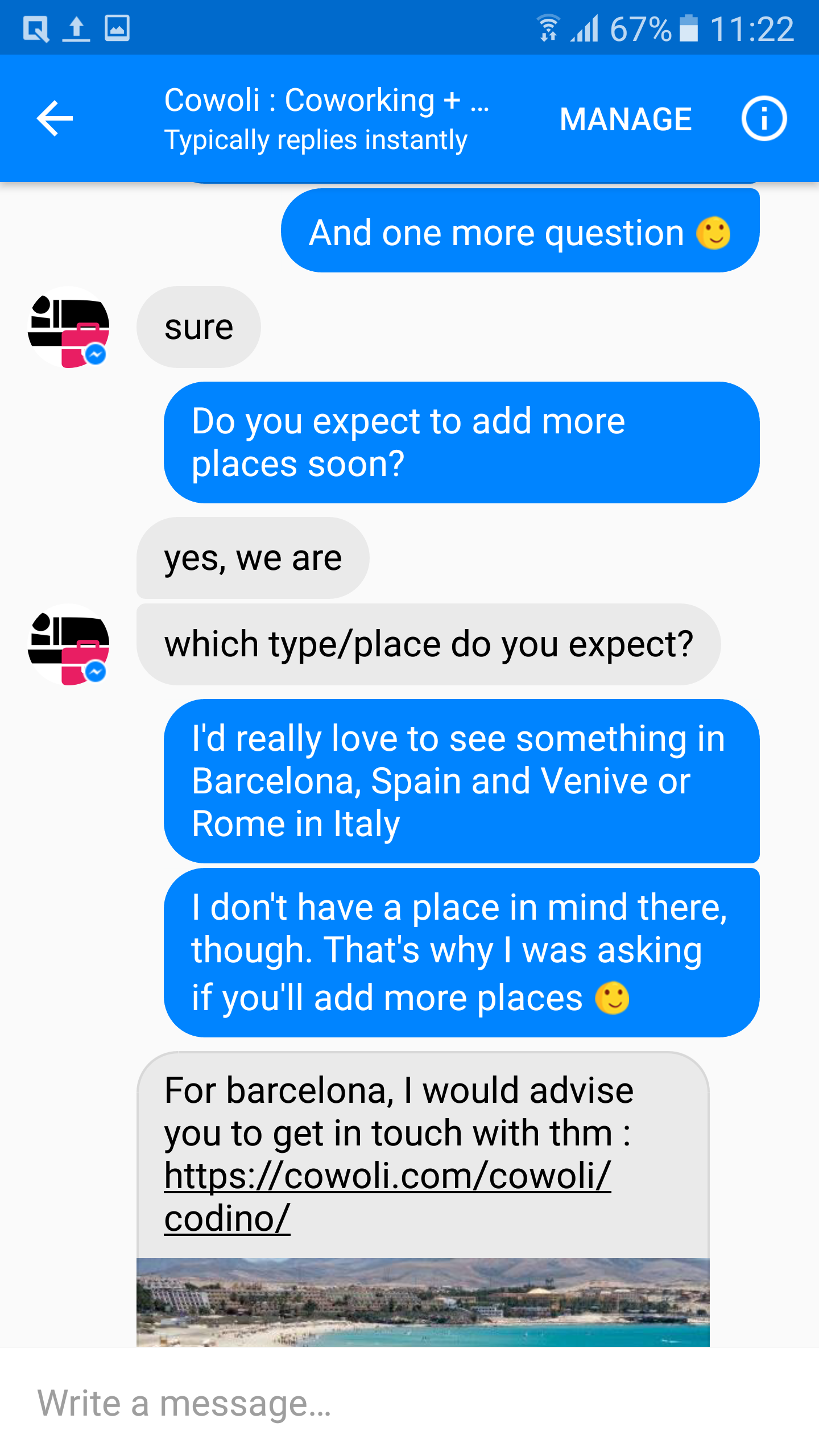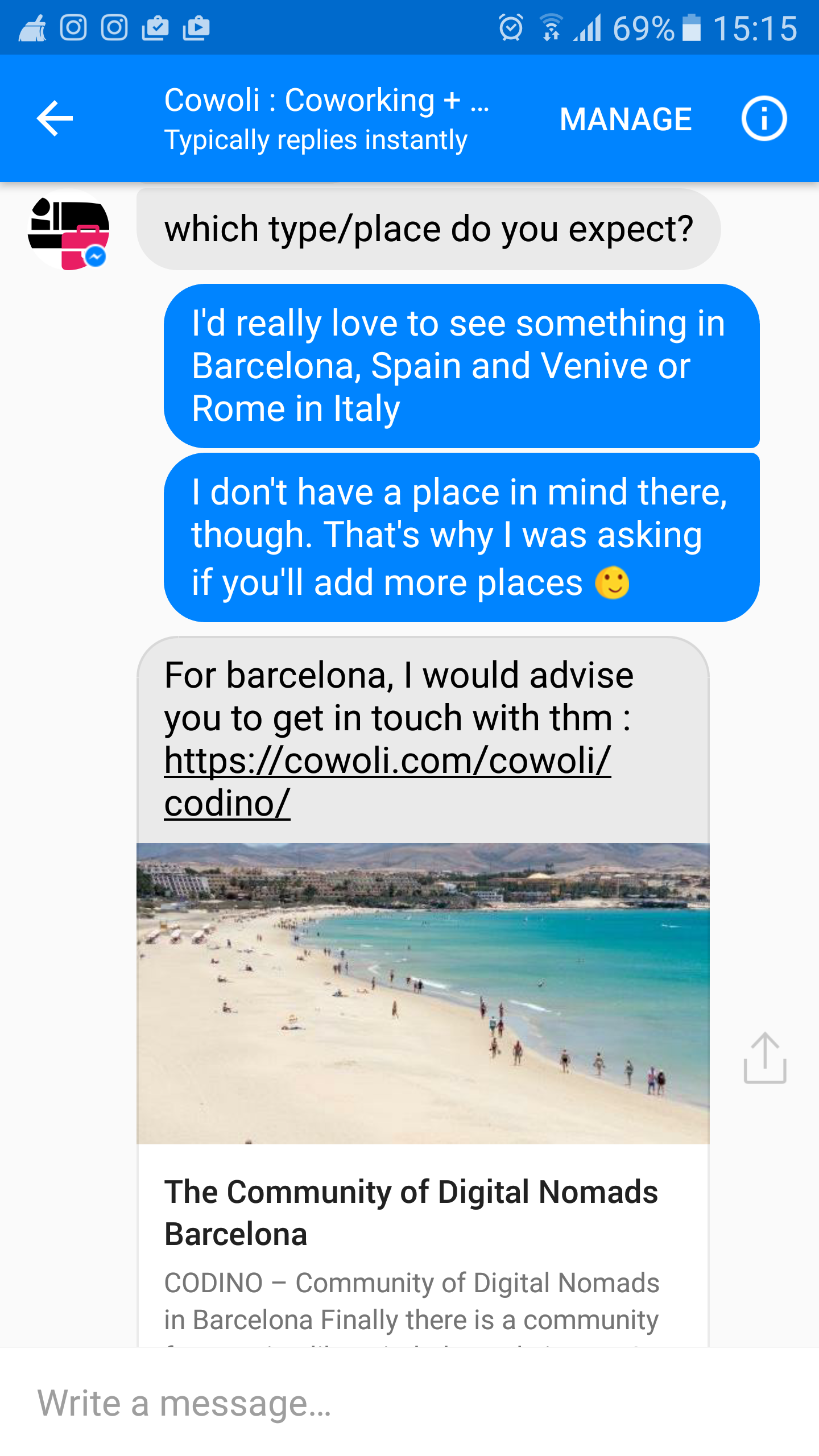Businesses often make the mistake of trying to jump from an initial conversation straight into “closing” the deal with a customer.
The problem is that you still don’t know enough about the person you’re talking to and their business. You have to prove to them the value of your service first, before asking them for money.
In the activation stage of the funnel, you’re nudging customers who have already made first contact with your business toward making a purchase. The key is to not push too hard. Instead, figuring out what customers are looking for, show them the value, and double-down. Your goal isn’t to make one-off sales—it’s to nurture loyal, repeat customers who will keep coming back.
In this article, we’ll take a look at some of the best examples of how companies use SMS to learn more about their audience, form relationships with them, and set the stage for conversion.
————————————————————————————
1. Figure out What People Want with “How Can I Help” Messages
As any good salesperson knows, the first step to closing a deal is by asking questions. It helps you narrow in on the customers most likely to make a purchase early-on in the conversation, and deliver a highly-targeted value proposition.
Activating customers over SMS can be tricky because it’s a more open-ended process than with a mobile app, where you have a series of stages to walk customers through. The first step is to get a fuller picture of what you’re customers are after—so you can razor in.
SnapTravel
SnapTravel helps people find great hotels via SMS and Facebook Messenger. SnapTravel relies on bots to power a big chunk of the customer conversation customers to find great hotel deals over SMS and Facebook Messenger. Text messaging provides a low-friction way that they can get people on board with the service on their mobile phones, without having to sign-up for an account or fill out a bunch of forms.
What works:
- SnapTravel primes potential customers for activation by gathering everything they need to book a hotel deal—travel dates, budget, and destination.
- Rather than forcing customers to sort through a bunch of drop-down calendars and travel times, this process occurs in natural conversation—much like it would with an old-school travel agent.
LawTrades
LawTrades is an on-demand legal service that pairs you with an attorney through SMS to handle any legal needs you might have for your business. Text-messaging helps the company scale high-touch service and support, and offer affordable legal counsel at much better price points than traditional legal practices.
What works:
- LawTrades starts the conversation with a series of specific questions geared 1). Location 2). Time urgency 3). Pricing information/ consultation.
- Reps use combination of automated responses and personalized support to get potential customers on the phone with an attorney ASAP.

2. Cut to the Value with Education Messages
When you learn more about your customer, you can segment them into different groups based on their needs and preferences. This allows you to personalize your outreach at scale and demonstrate value faster to your future customers.
Your goal in this stage is to get customers to an Aha! moment, and show them the value of your service so they come back for more.
Drinkeasy
Drinkeasy is a service that offers personalized suggestions for hard-to-find beverages. They use SMS to naturally onboard customers and then deliver highly-personalized suggestions to them.
What works:
- Every month customers get a recommendation for a specific brand or product, tailored to their tastes.
- Since Drinkeasy already knows customers’ broad preferences from the onboarding sequence, they can use this information to deliver on their promise by finding super-rare products that customers wouldn’t be able to find on their own.
CoWoLi
CoWoLi helps digital nomads in search of short-term renting opportunities while traveling the world. CoWoLi drives activation by keeping the SMS conversation going to find out more about their customers’ needs and suggesting a product that meets it. This is a sign of a team that prioritizes “customer success” vs just “support”.
What works:
- In this example, the customer cannot find what they’re looking for on the site, so they turn to CoWoLi’s team with a question about adding more spaces. The team uses this opportunity to 1) learn more about what this potential customer is looking for and 2) offer an alternative solution, even if the company won’t directly benefit from it.
- CoWoLi doesn’t give up on the customer just because it’s not a good fit at the moment. For CoWoLi, it’s more important to be helpful to their audience and build a relationship, rather than to push for a sale.
3. Guide Customers with Follow-up Messages
Even the best customers require a gentle ‘nudge’ in the right direction. A well-intended and well-placed follow-up has its place in SMS. It can help a ‘lost’ customer get back on track by answering questions or clarifying what the next step is, or it can collect information on what stopped someone from making a purchase.
Farmstead
Farmstead is on a mission to help busy people find deals on locally-sourced and organically-grown food by offering weekly deliveries of carefully selected products. Farmstead uses SMS to manage the full process of signing up and coordinating orders.
What works:
- Farmstead uses text messaging to follow up with people who have expressed interest in the service but haven’t converted yet.
- Offering to help and answer questions over SMS is a great way to keep Farmstead’s brand fresh in the minds of their audience without being salesy.
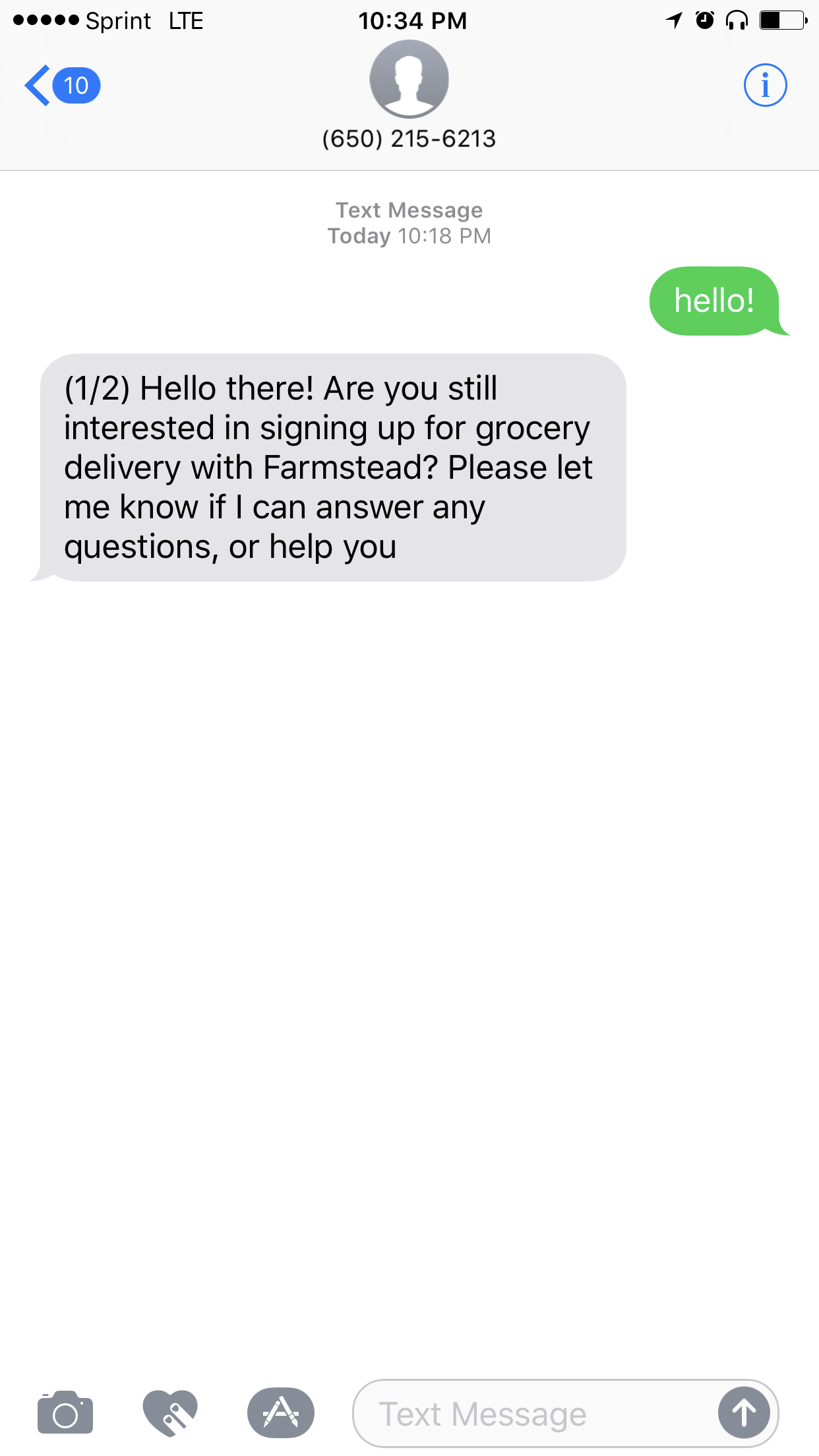
Where’s the Value?
Activation is the cornerstone on the customer’s path from “Who are you?” to “Shut up and take my money.”
To do that you have to learn more about your customers, so you know what argument to use to convince them to convert. Then you need to target them with relevant campaigns that clearly demonstrate the value of your product. Finally, you should follow-up with those customers who’re best fitted to benefit from using your product.
Going through these steps allows you to move your audience to the next part of the funnel where you can convert them into paying customers.
